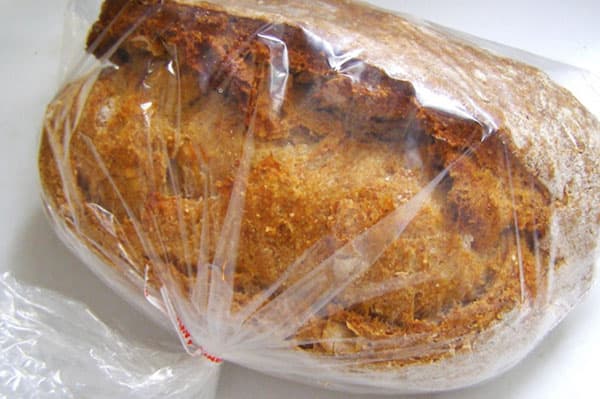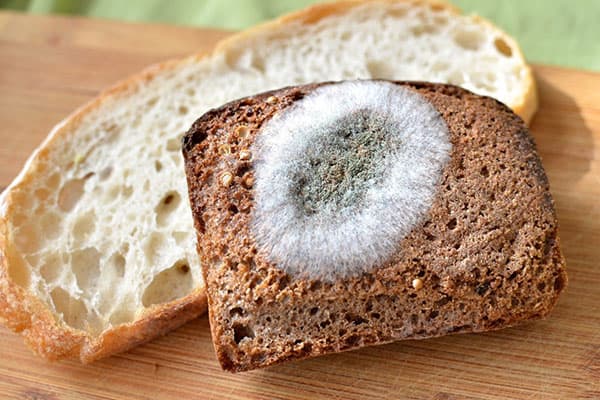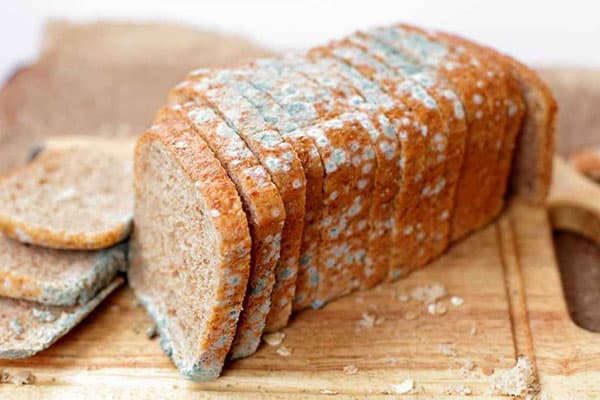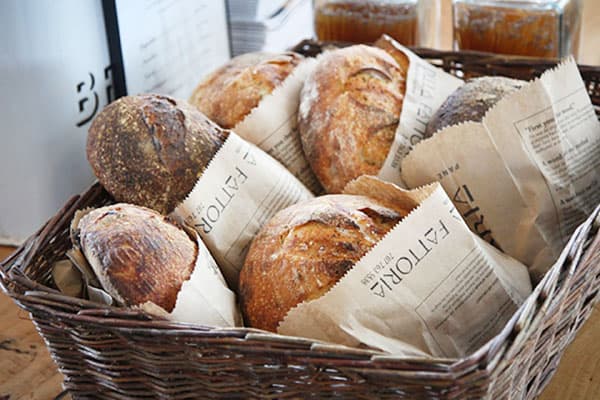Why is bread from the store quickly moldy and not stale?
The quality of bread is determined by many parameters, various indicators are taken into account. Most of them are known only to specialists. Ordinary shoppers are puzzled why bread from the store is moldy, although it seems to be stale.
The reason is improper storage?
Manufacturers claim that bakery products are moldy due to improper storage. The population buys products in plastic bags, and stores them in them. Favorable conditions for the development of mold are created. Heat is another reason for the rapid appearance of characteristic white and gray-green spots on the crust and slice of flour products.
Roskontrol experts found that mold spores get to the surface of the bread after baking - during laying, cooling and transportation. Microbes are present in the air of bakery workshops, settle on equipment, containers, clothing workers.
The rate of germination of spores and the formation of mold depends on the following reasons:
- technology, method of preparation (accelerated, sourdough, unpaired, unpaired);
- recipes, acidity, mode of preparation of bakery products;
- the presence of special treatment with microwave rays or other methods;
- storage conditions.
Experts say that quick spoilage of bread products is not related to the quality of grain and yeast. Baking occurs at a temperature of about 245 ° C, and spores die even when heated to 80 ° C.
Quality bread must be moldy
Wheat bread under normal conditions is covered with a white-gray coating on the fourth or sixth day. Products made from rye or a mixture of two types of flour - on the sixth to eighth day. Bread with a higher acidity is more resistant to fungi. Rye may not be moldy for more than 8 days.
If bakery products do not mold for a long time, then they contain acidifying microbiological additives. Also, the development of the fungus is delayed by iodized salt, whey in the composition of products.
The addition of bran, flour from rice, oats, buckwheat, fruit or vegetable powders, on the contrary, accelerates the growth of mold.
The most unpleasant reason for buyers is that the technology allows for the production of soaked stale bread, not sold by stores, in the dough. Products running from the bakery to the store and vice versa are covered with a large number of fungal spores. The likelihood of them falling on fresh flour products increases.
The appearance of mold on modern bread does not necessarily mean that technology was violated in its manufacture. Storage in a plastic bag in a warm room is a sufficient condition for the growth of fungal spores.
Is mold dangerous?
The fungus is visible on the surface of the bread in the form of plaque. However, the mycelium penetrates and infects the whole loaf. Cutting the crust with mold spots does not save the bread from further spoilage. There is such a product dangerous: it is infected with toxins.
Mold spores are invisible, but present everywhere - on packaging, knives, in a bread box. The air contains fungi and bacteria, but isolating bread in a plastic bag will not help get rid of them. Bakery products are initially infected with mold, only in the first days after purchase its growth is still invisible.
Under favorable conditions - in heat, with high humidity - spores germinate quickly. Thread penetrates inside the bread, through which the outer part of the fungus receives nutrients. The upper dark part of the mold spots are clusters of many new maturing spores.
Recommendations:
- Bread should be stored in a paper bag, which can be placed in a loose plastic bag.
- To get rid of mold, you need to wash the bread box with water and vinegar once a week. The same treatment is needed for knives, countertops.
- It is better to keep bread in the refrigerator, then it does not grow moldy, but stale, but slowly.
A decrease in temperature causes a slowdown in the germination of spores and the development of mycelium. Microscopic pest becomes inactive, does not grow and does not multiply. This way you can save bread from the store from mold. But the best option is to buy as much as you manage to eat in a couple of days.




I can bet a little about storing bread in plastic bags. When I baked bread on my own sourdough, I stored it in those very packages, so there was no mold and staleness. For the experiment, I left bread for a month, to my surprise, only cutting became a little more difficult, although inside it remained the same. More than a month did not hold, ate such a yummy. It’s just that our bread is made quite differently and not from what it used to be. There are many articles and videos about this.